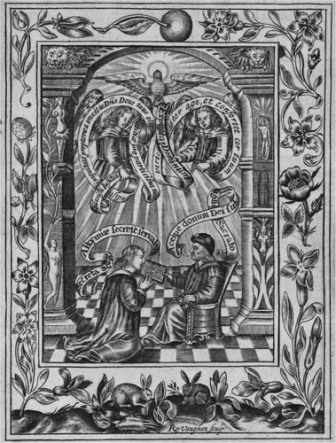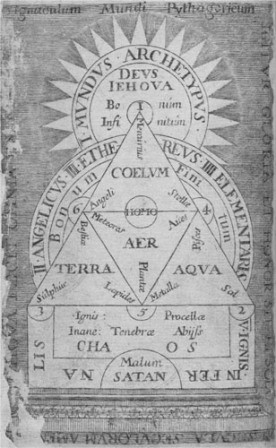Solomon's Secret Arts
Read Solomon's Secret Arts Online
Authors: Paul Kléber Monod




Copyright © 2013 Paul Kléber Monod
All rights reserved. This book may not be reproduced in whole or in part, in any form (beyond that copying permitted by Sections 107 and 108 of the U.S. Copyright Law and except by reviewers for the public press) without written permission from the publishers.
For information about this and other Yale University Press publications, please contact:
U.S. Office:
[email protected]
www.yalebooks.com
Europe Office:
[email protected]
www.yalebooks.co.uk
Set in Minion Pro by IDSUK (DataConnection) Ltd
Printed in Great Britain by TJ International Ltd, Padstow, Cornwall
Library of Congress Cataloging-in-Publication Data
Monod, Paul Kléber.
Solomon's Secret Arts: The Occult in the Age of Enlightenment/Paul Kleber Monod.
pages cm
ISBN 978-0-300-12358-6 (hardback)
1. Magic. 2. Science—History—Miscellanea. 3. Alchemy. 4. Occult sciences. 5. Enlightenment. I. Title.
BF1611.M65 2013
130.9—dc23
2012043028
A catalogue record for this book is available from the British Library.
10 9 8 7 6 5 4 3 2 1
To Jan and Evan, as always.
C
ONTENTS

Introduction: What Was the Occult?
Chapter One: The Alchemical Heyday
Chapter Two: The Silver Age of the Astrologers
Chapter Three: The Occult Contested
Chapter Five: The Newtonian Magi
Chapter Six: The Occult on the Margins
Part Three: Glad Day, 1760–1815
Chapter Seven: The Occult Revival
Chapter Eight: An Occult Enlightenment?
Chapter Nine: Prophets and Revolutions
I
LLUSTRATIONS

1.
Engraving of an alchemical adept and a student from Elias Ashmole,
Theatrum Chemicum Britannicum
(London, 1652). © The British Library Board.
2.
Engraving of a Behmenist alchemical diagram from
The Philosophical Epitaph of W.C. Esq.
(London, 1673). © The British Library Board.
3.
Page from John Gadbury,
ΕΩΗΜΕΡΙΣ, Or, A Diary Astronomical and Astological, For the Year of Grace 1668
(London, 1667), showing the astrological man. The Huntington Library, San Marino, California.
4.
Frontispiece portrait engraving from John Heydon,
Theomagia: Or, The Temple of Wisdom
(London, 1664). © The British Library Board.
5.
Frontispiece engraving of six scenes of apparitions from Joseph Glanvill,
Saducismus Triumphatus: The Second Part
(London, 1681). © The British Library Board.
6.
Frontispiece engraving of the Palace of Secrets from Knorr von Rosenroth,
Kabbala Denudata
, vol. 1, part 1 (Salzbach, 1677). Collection of German Literature, Beinecke Rare Book and Manuscript Library, Yale University.
7.
Frontispiece engraving of the Tree of Life from Baro Urbigerus,
Aphorismi Urbigerani
(London, 1690). © The British Library Board.
8.
Engraving of two sigils from John Partridge,
Merlinus Liberatus
(London, 1698). The Huntington Library, San Marino, California.
9.
Engraved plan of the Temple of Solomon from Sir Isaac Newton,
The Chronology of Ancient Kingdoms Amended
(London, 1728). © The British Library Board.
10.
Avebury as a serpent, an engraving from William Stukeley,
Abury, A Temple of the British Druids
(London, 1743). © The British Library Board.
11.
Frontispiece portrait from Duncan Campbel,
Secret Memoirs of the Late Mr. Duncan Campbel, The Famous Deaf and Dumb Gentleman
(London, 1732). © The British Library Board.
12.
Fold-out engravings of “The Third Table” from Jacob Behmen, “Four Tables of Divine Revelation,” in
The Works of Jacob Behmen
, vol. 3 (London, 1772). © The British Library Board.
13.
Engraved portrait of Ebenezer Sibly, from Ebenezer Sibly,
The Medical Mirror
(London, 1794). The Wellcome Library, London.
14.
Joseph Wright of Derby, “The Alchymist discovers Phosphorus,” 1771. © 09/2012 Derby Museums and Art Gallery, Derby.
15.
“Revolution of America”, from Ebenezer Sibly,
A New and Complete Illustration of the Occult Sciences
(2 vols in one, London, 1790). © The British Library Board.
16.
Peter Lambert de Lintot, “Chapter and Grand Lodge of England,” engraving, 1789. The Library and Museum of Freemasonry, Freemasons' Hall, London.
17.
“Animal Magnetism—The Operator putting his Patient into a Crisis,” engraving from Ebenezer Sibly,
A Key to Physic, and the Occult Sciences
(London, 1810). The Wellcome Library, London.
18.
Urizen from William Blake,
Europe: A Prophecy
(1794). © The British Library Board.

1
The aspiring young alchemical adept accepts a book of secrets from his aged master in this engraving from Elias Ashmole's
Theatrum Chemicum Britannicum
. Above them, angels rejoice and the Holy Spirit sends out celestial rays. The two columns and the lions suggest that the location is Solomon's Temple, while the borders are filled with the abundance of Nature. The alchemist's quest is at the center of the divine and natural universes.

2
Inspired by the illustrations to early editions of Jacob Boehme's works, this alchemical diagram from
The Philosophical Epitaph of W.C. Esq
. represents a “Pythagorean” or rather Copernican universe, in which Man, located between the celestial and elemental spheres, revolves around a solar God. The rudiments of alchemy—sulphur, stones, plants, metals, salt—stand above the primeval chaos and the infernal fire in which Satan resides. They are elevated by mercury, which points directly towards the divine. This is evidently a spiritual as well as a natural quest.
